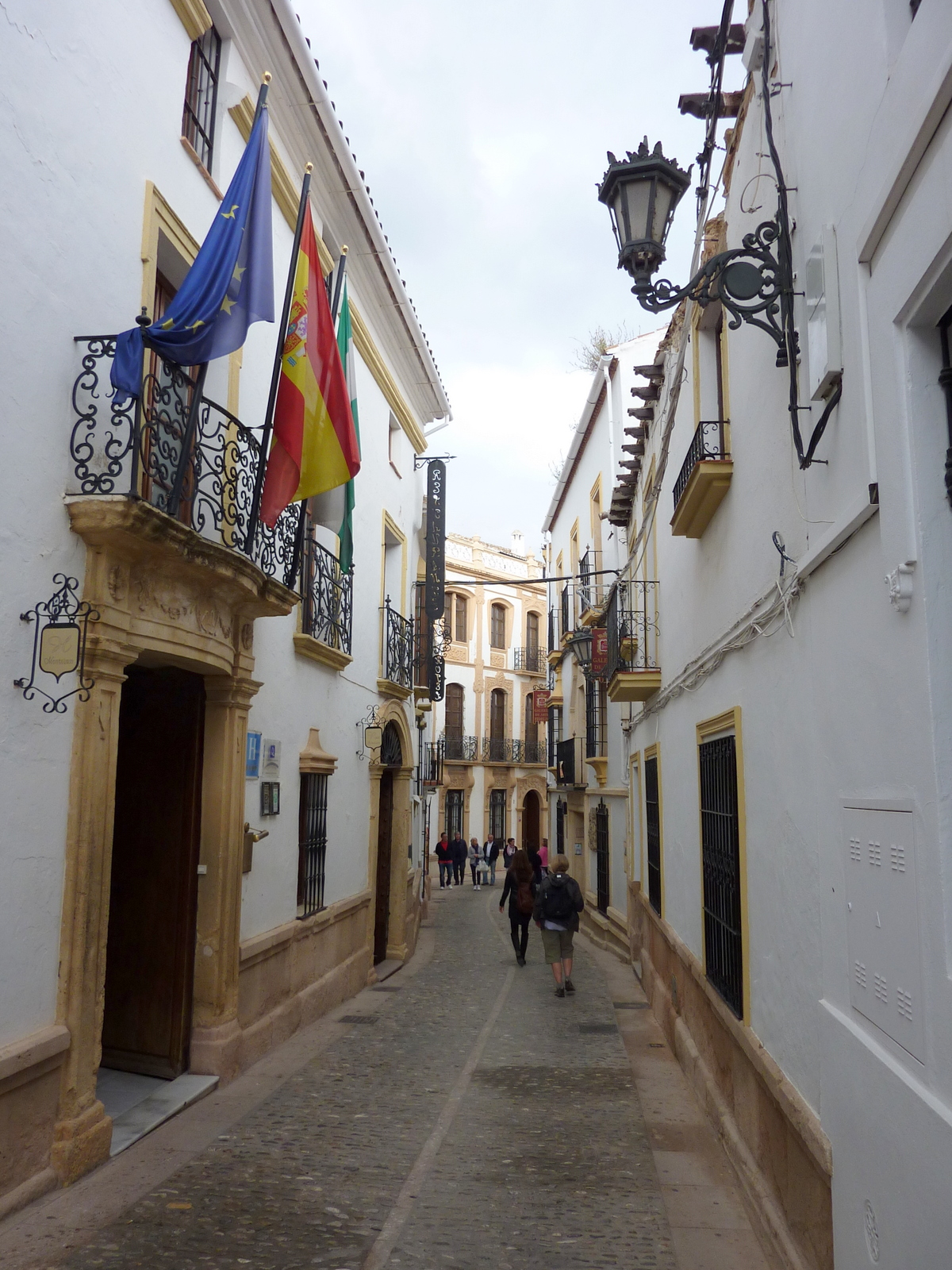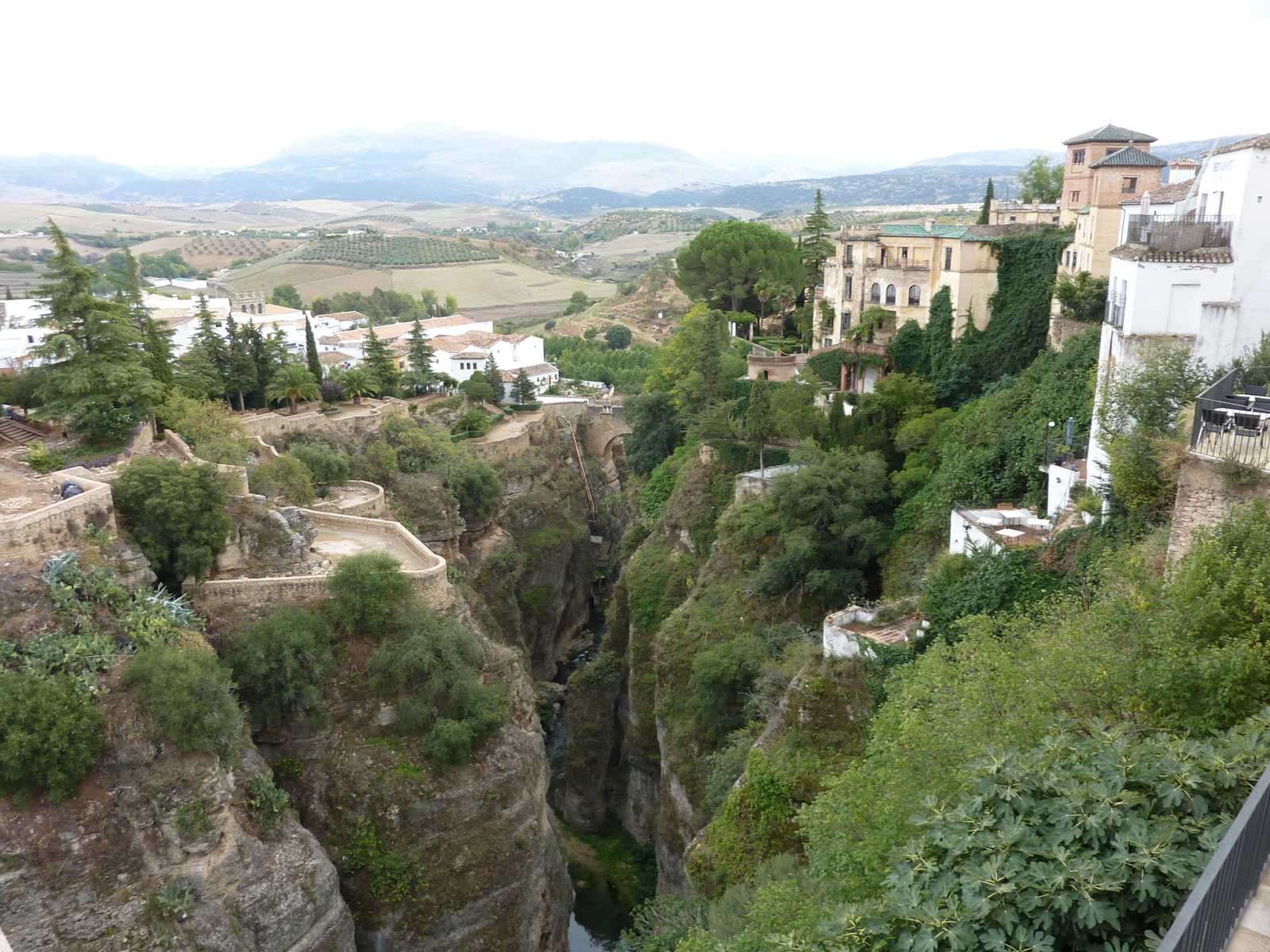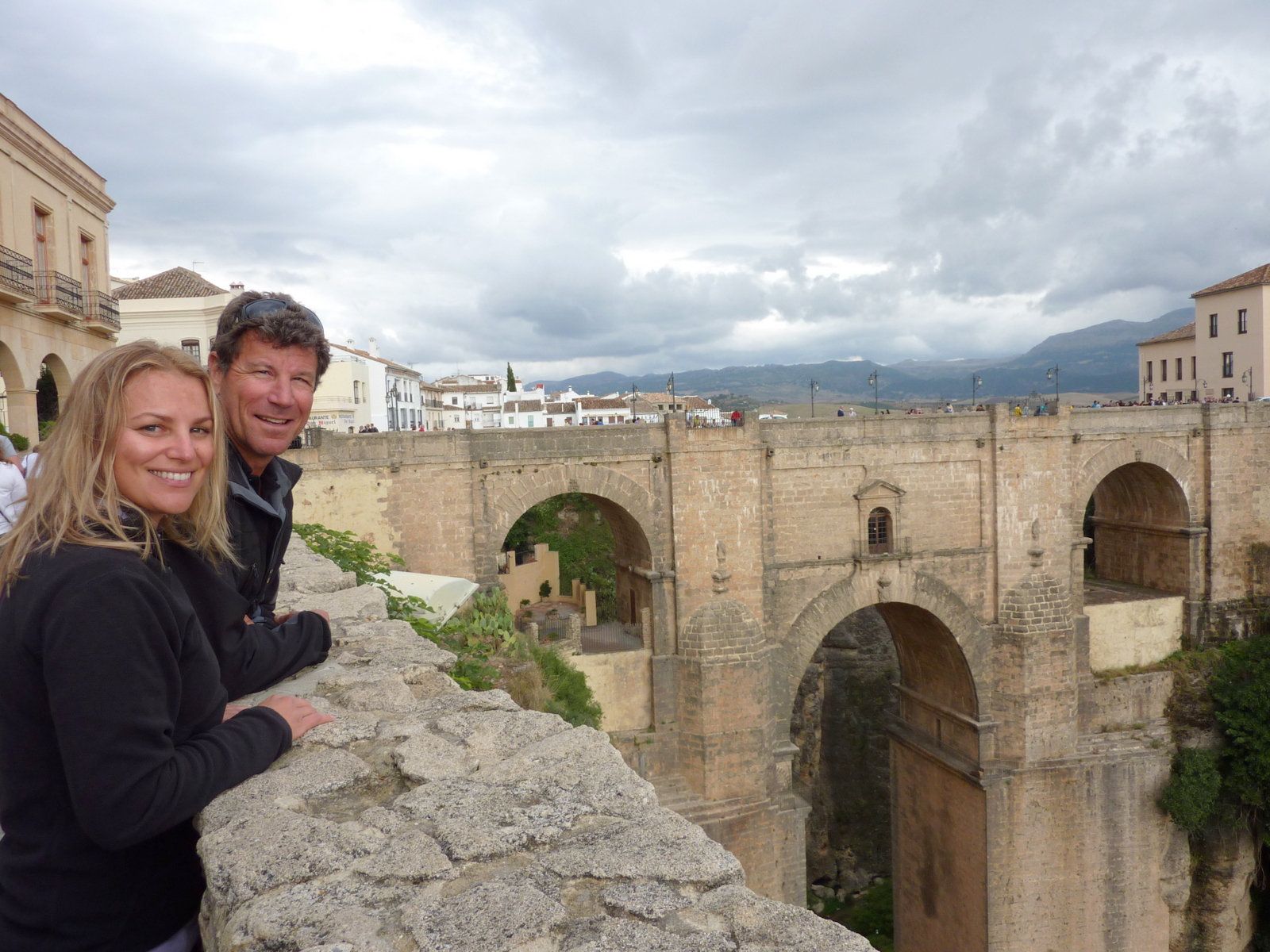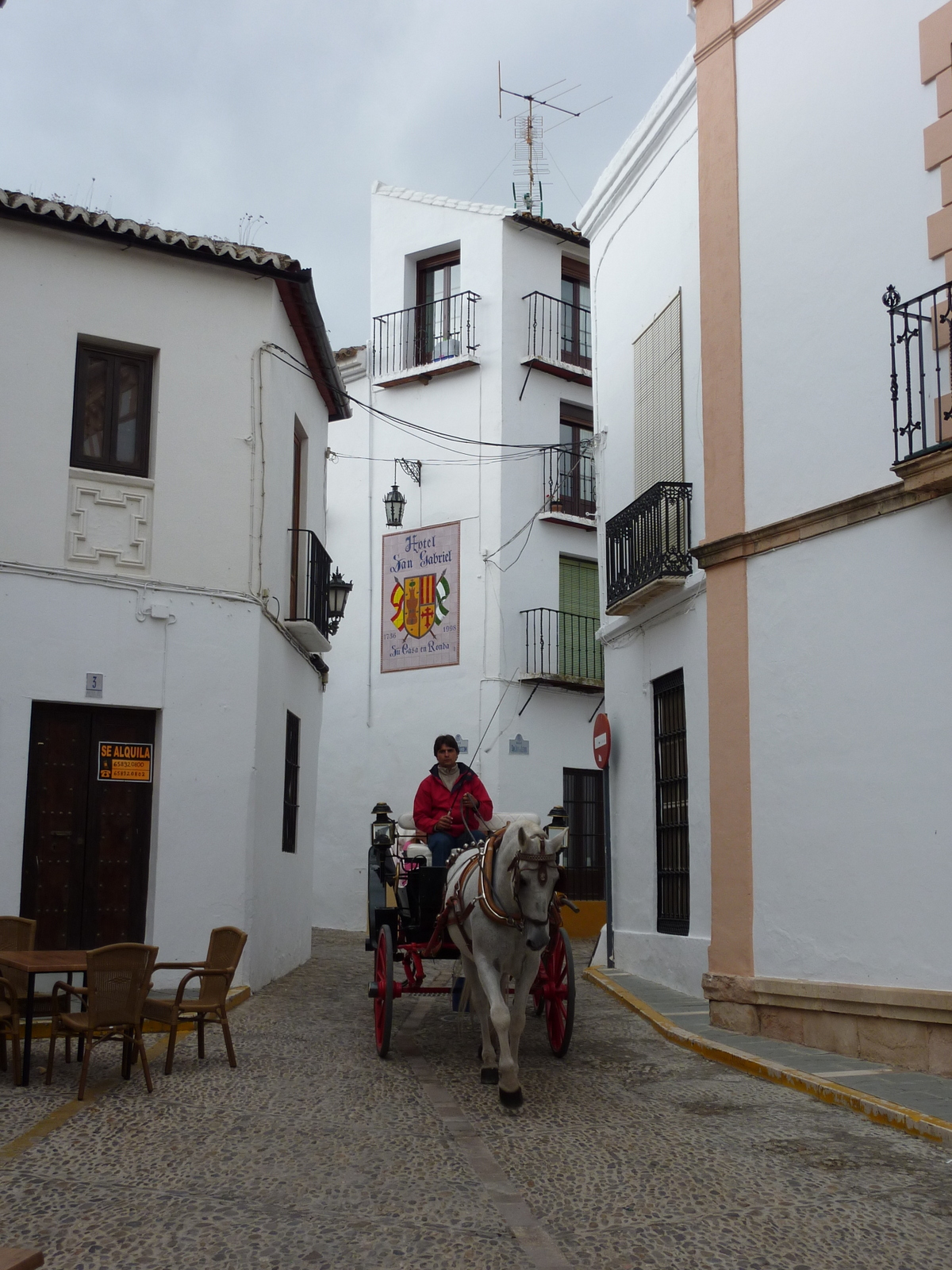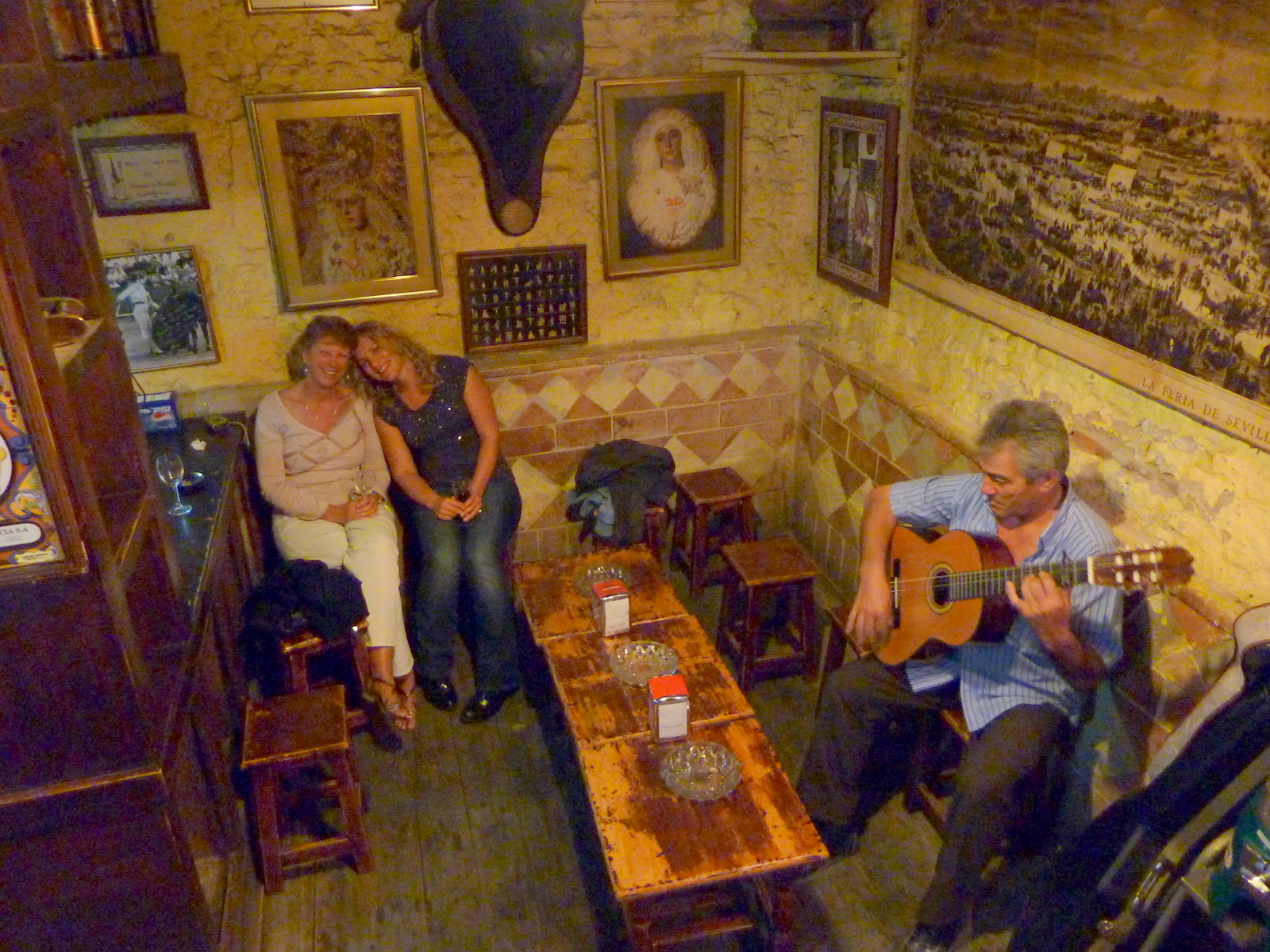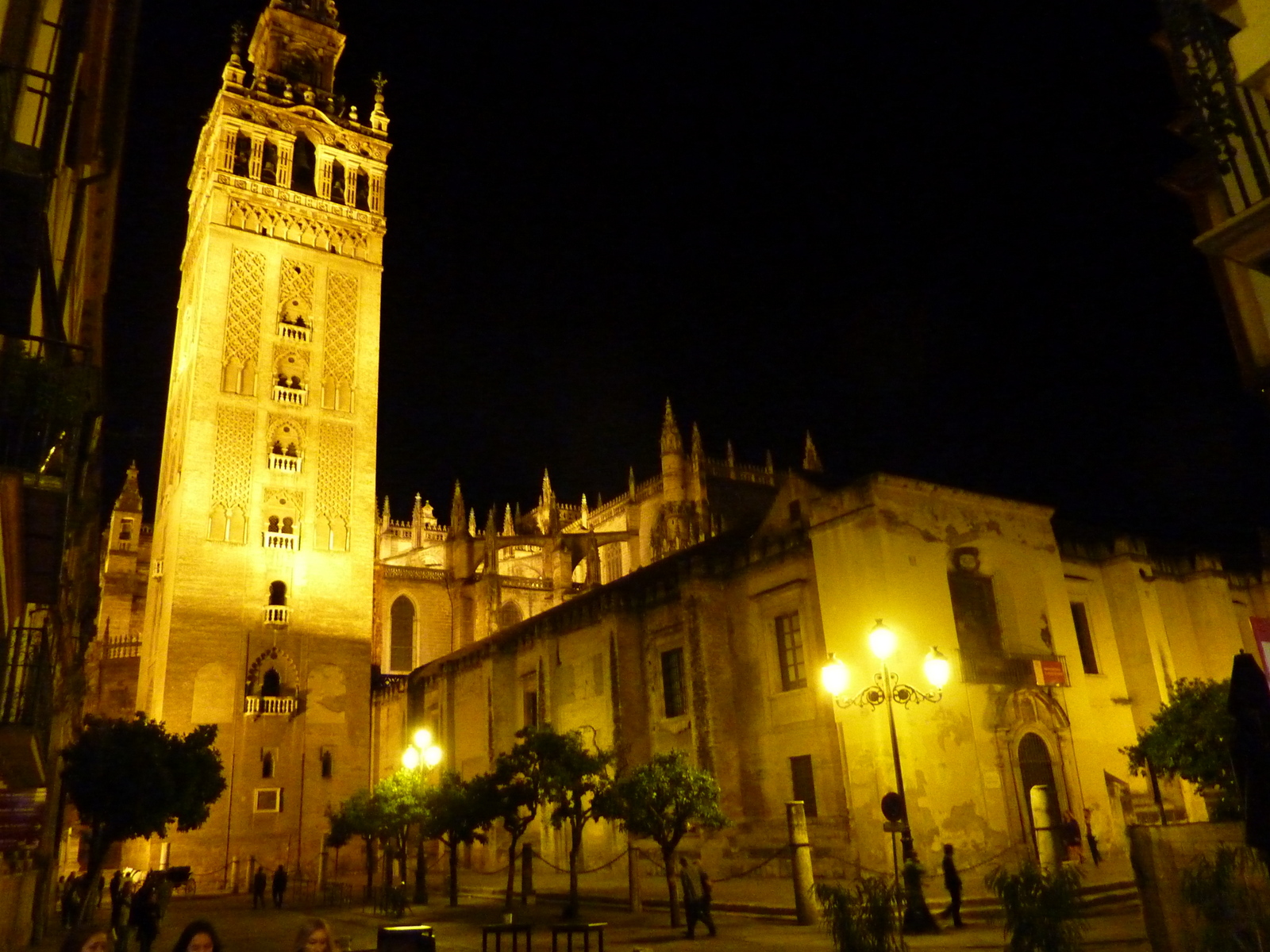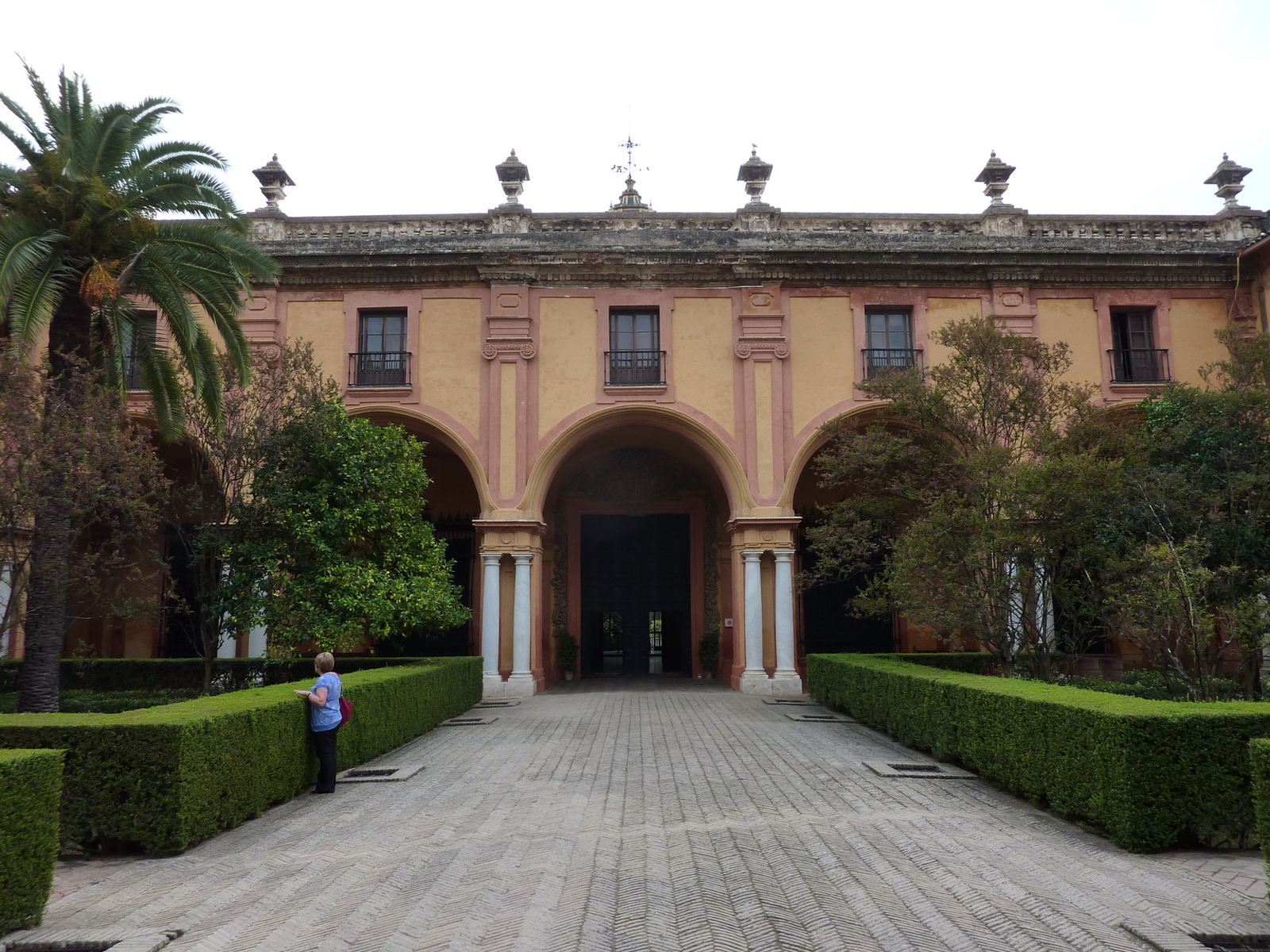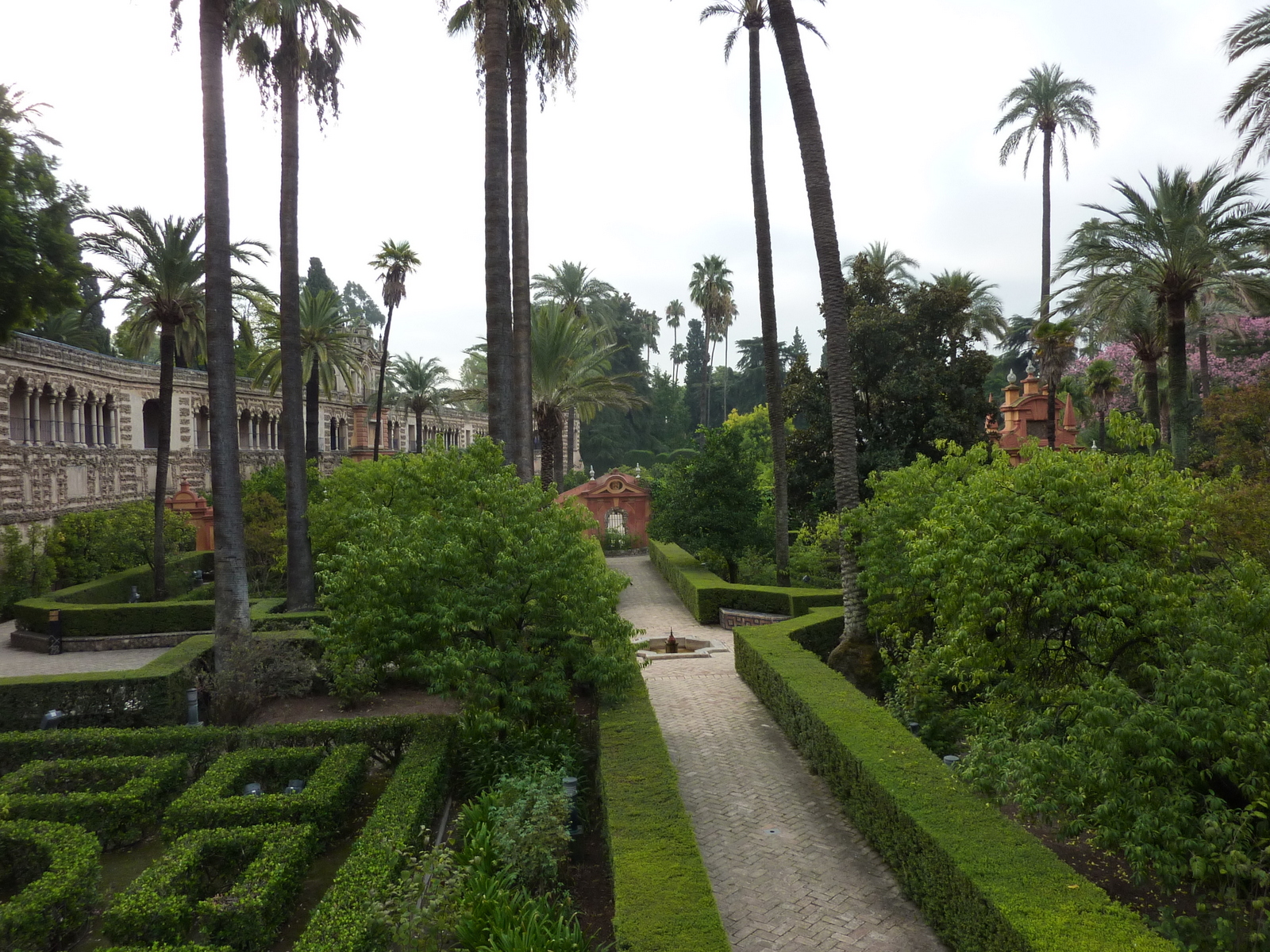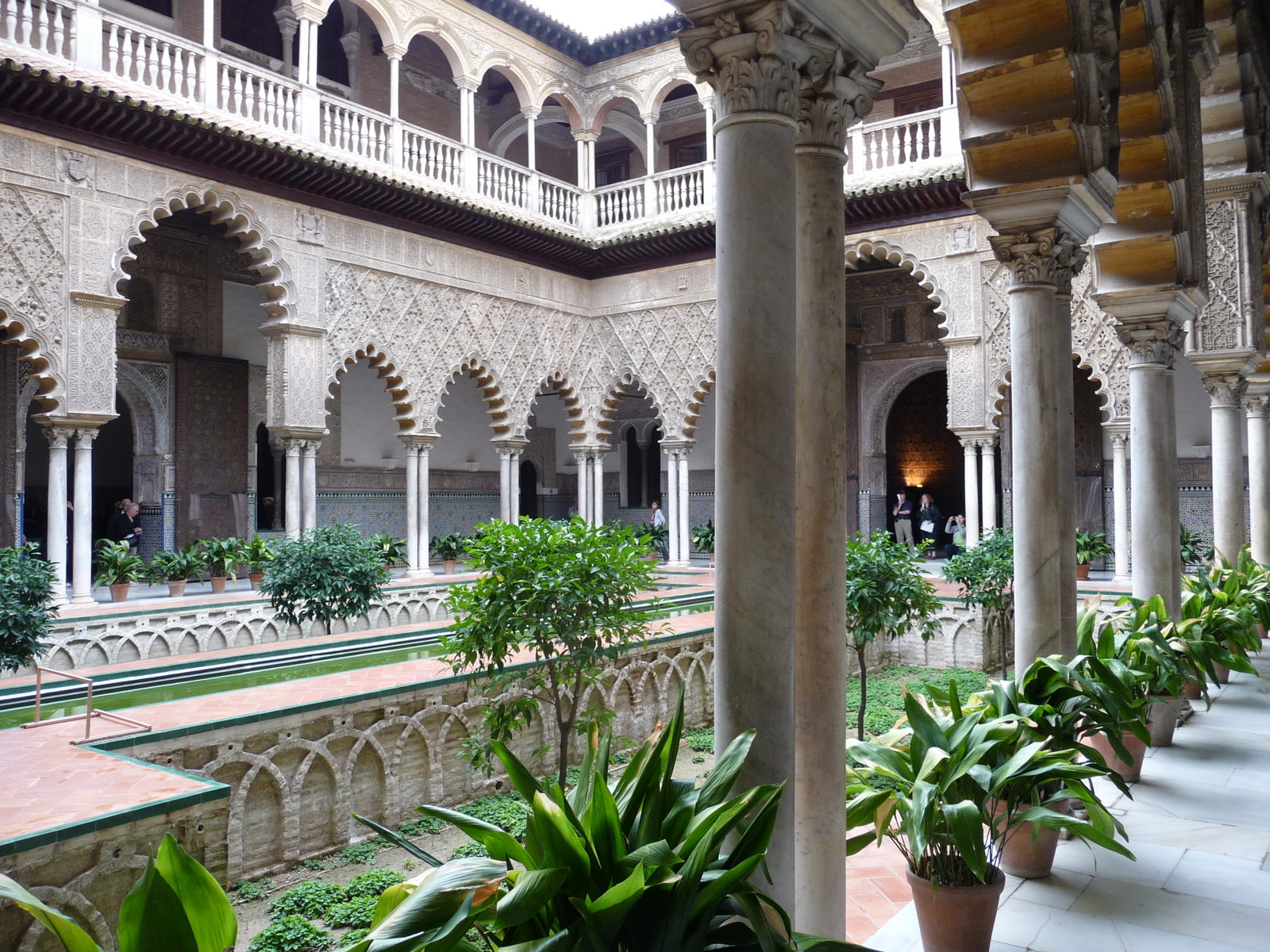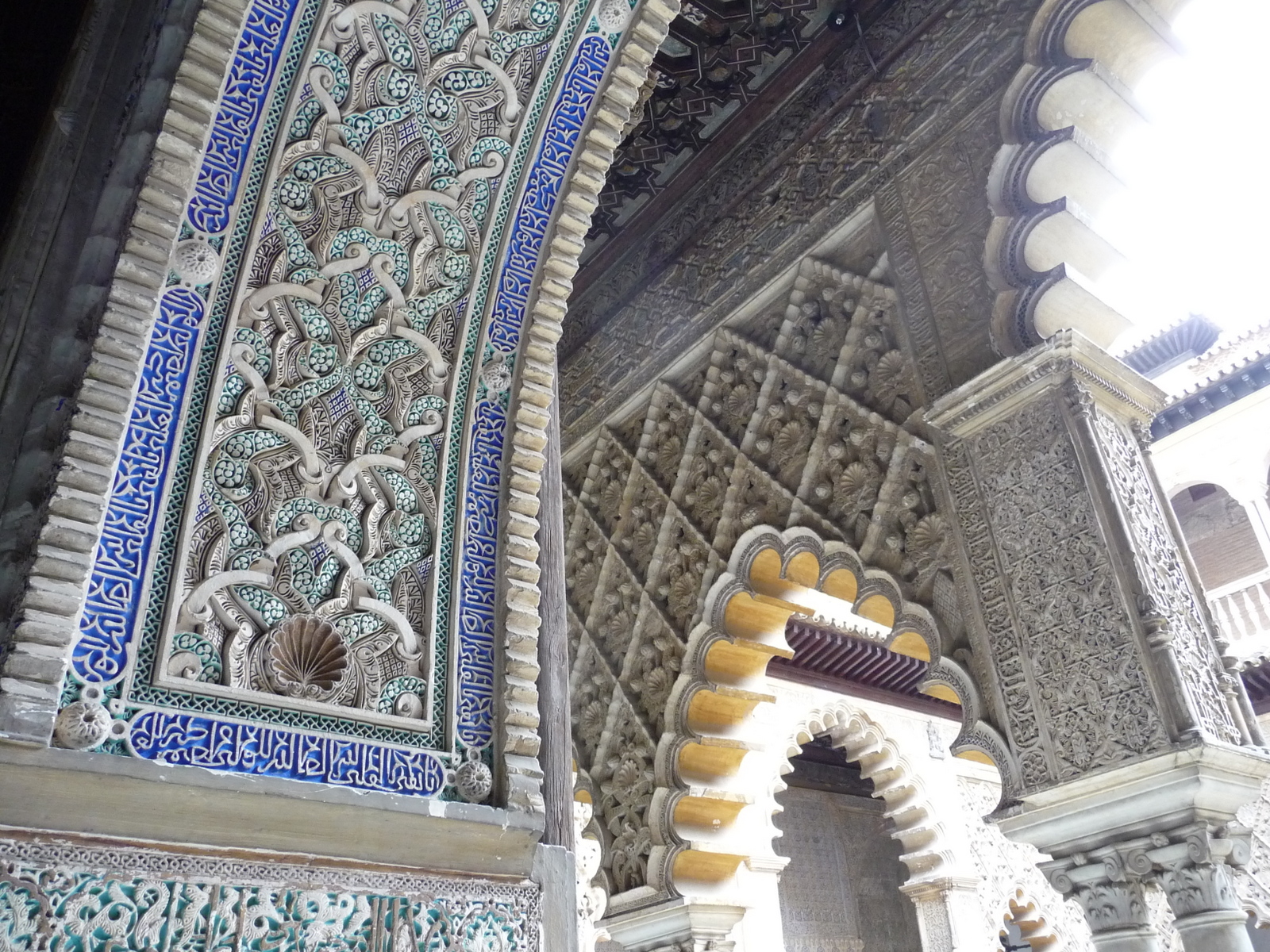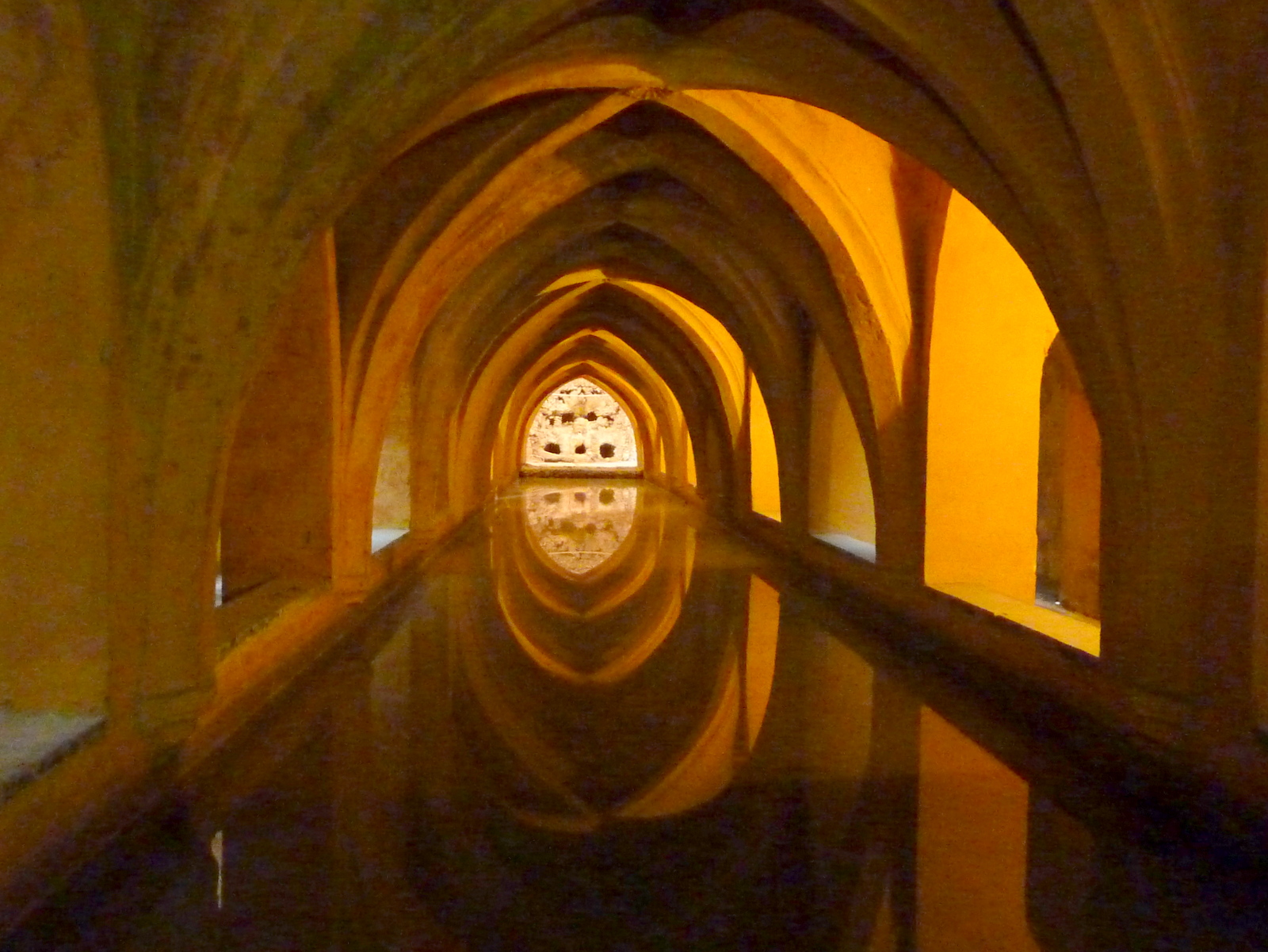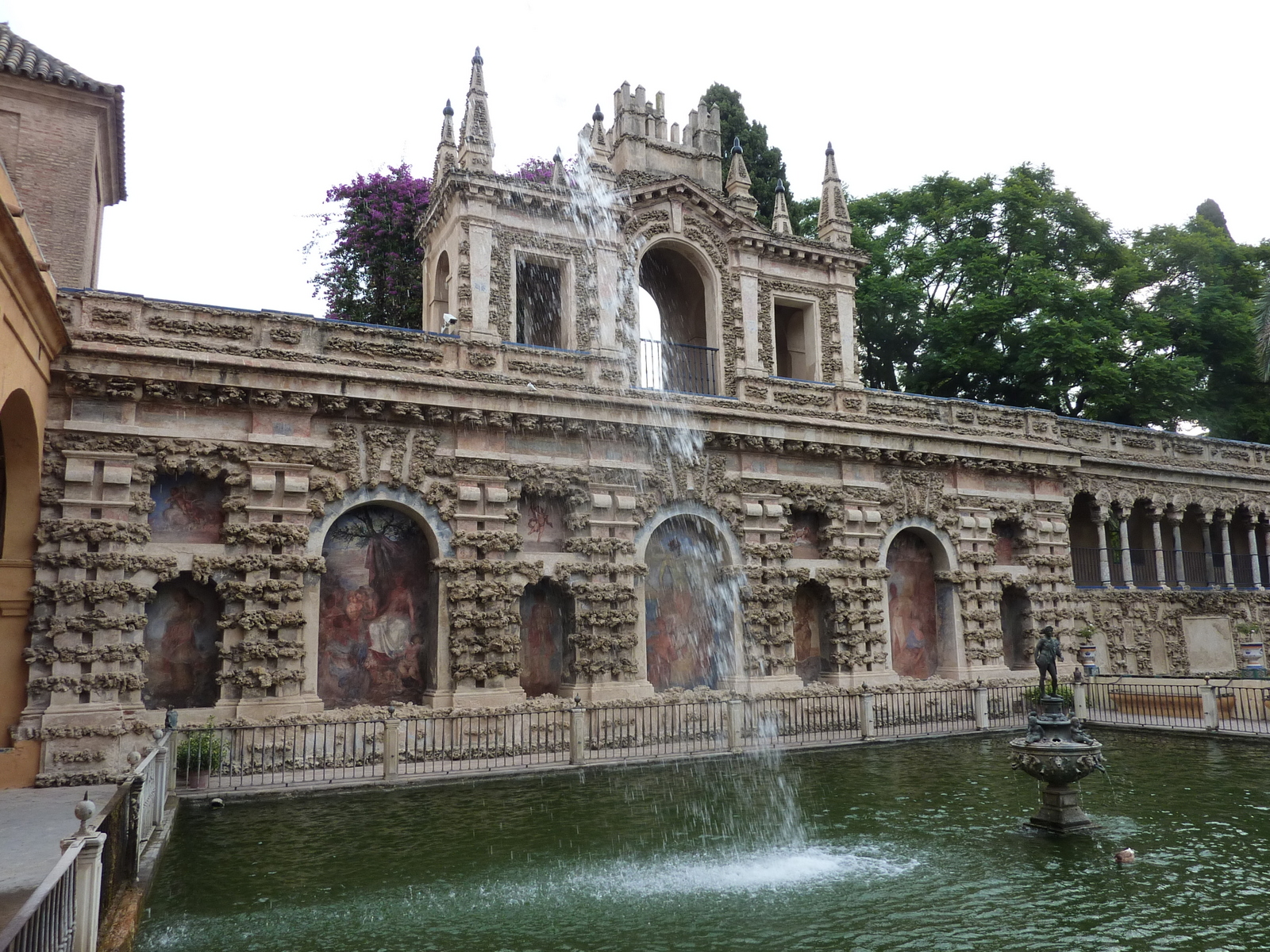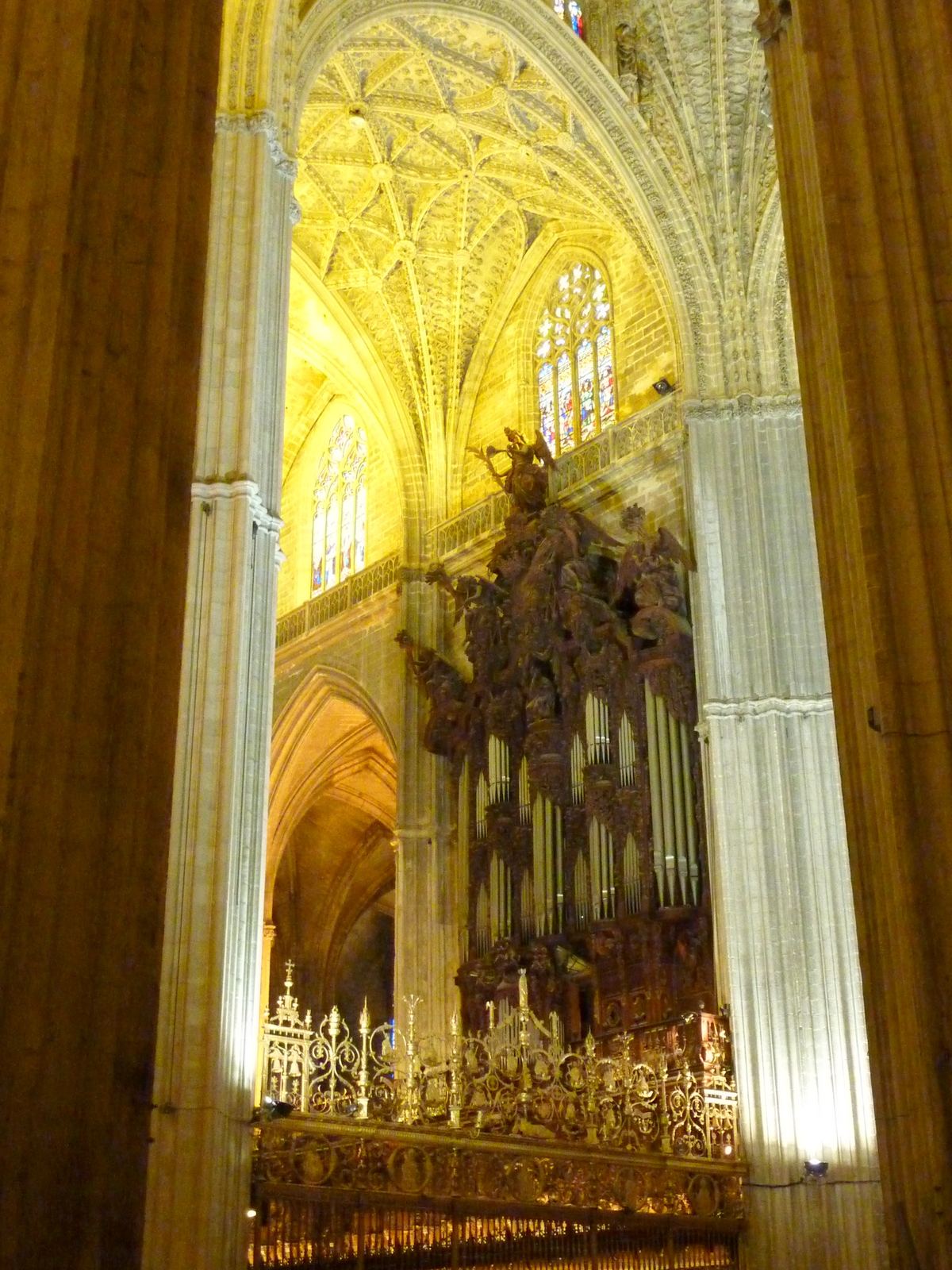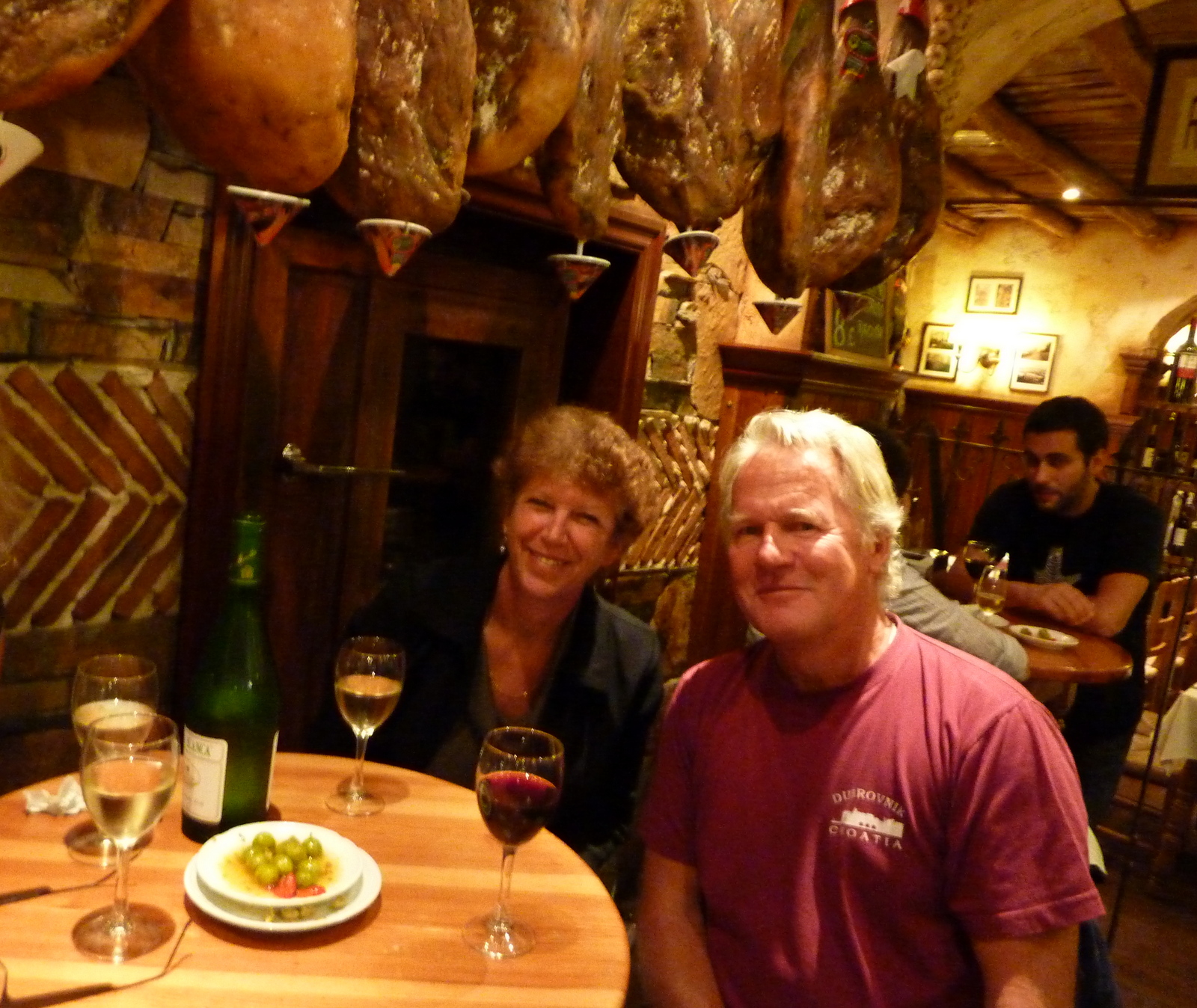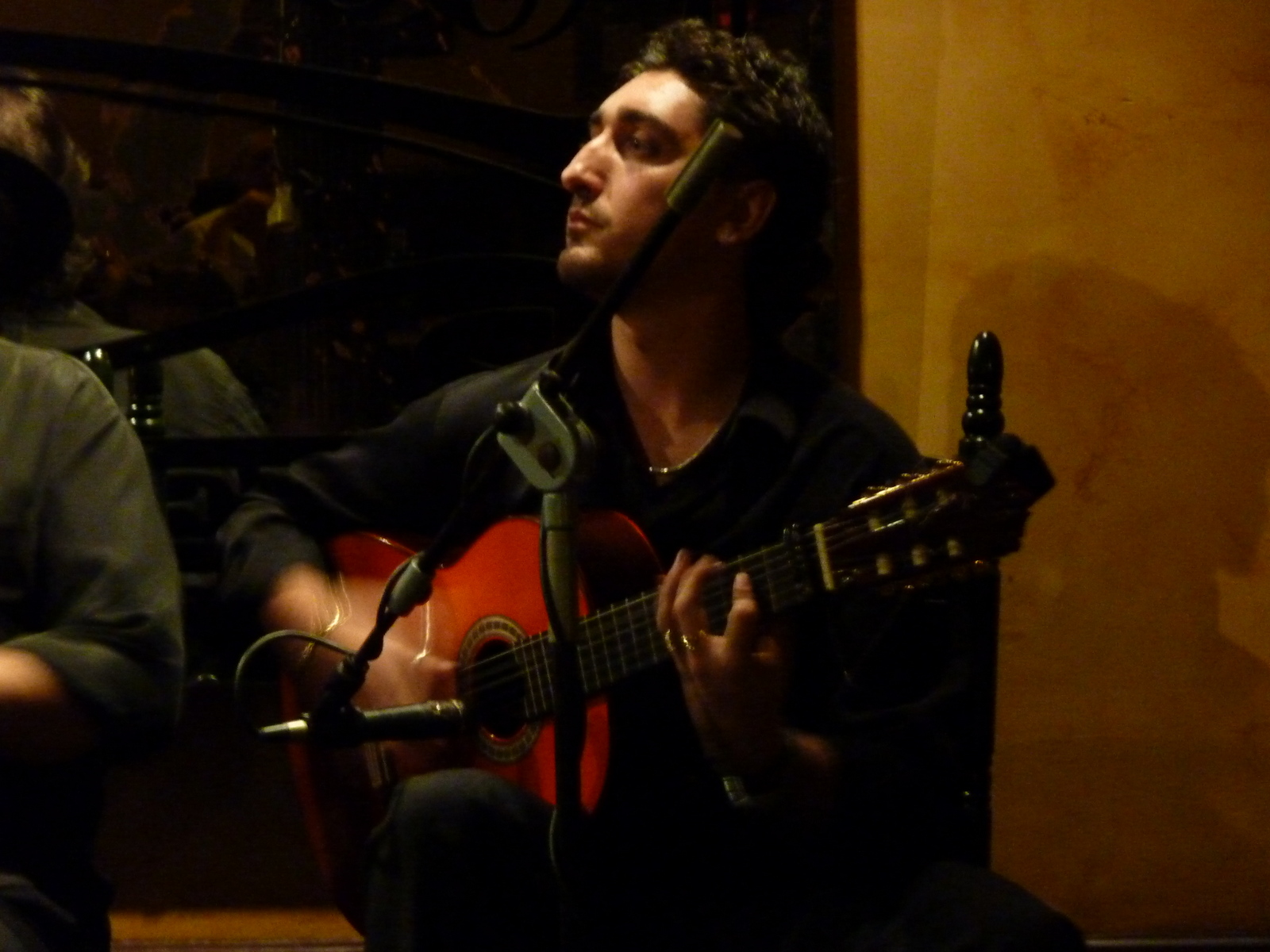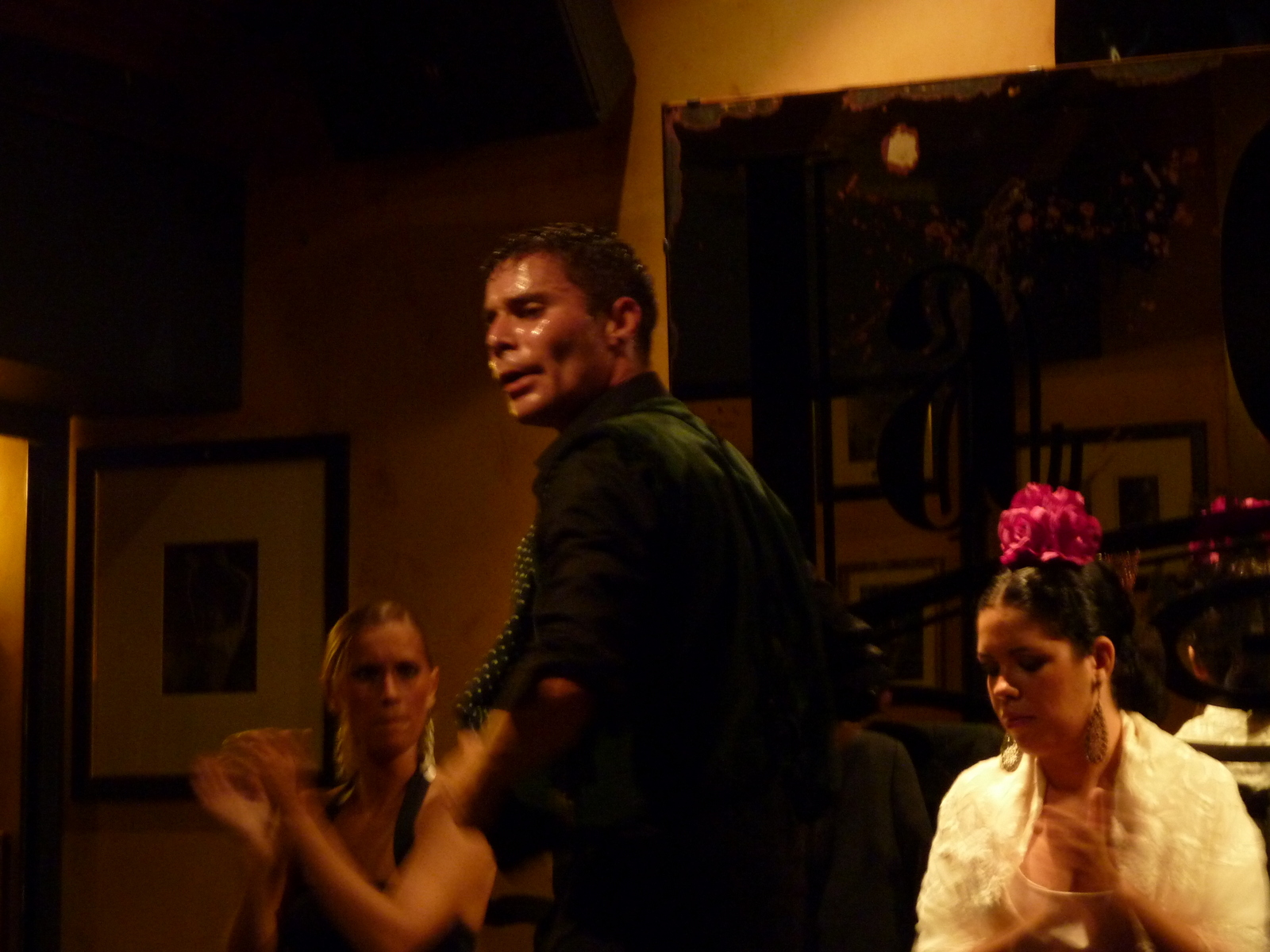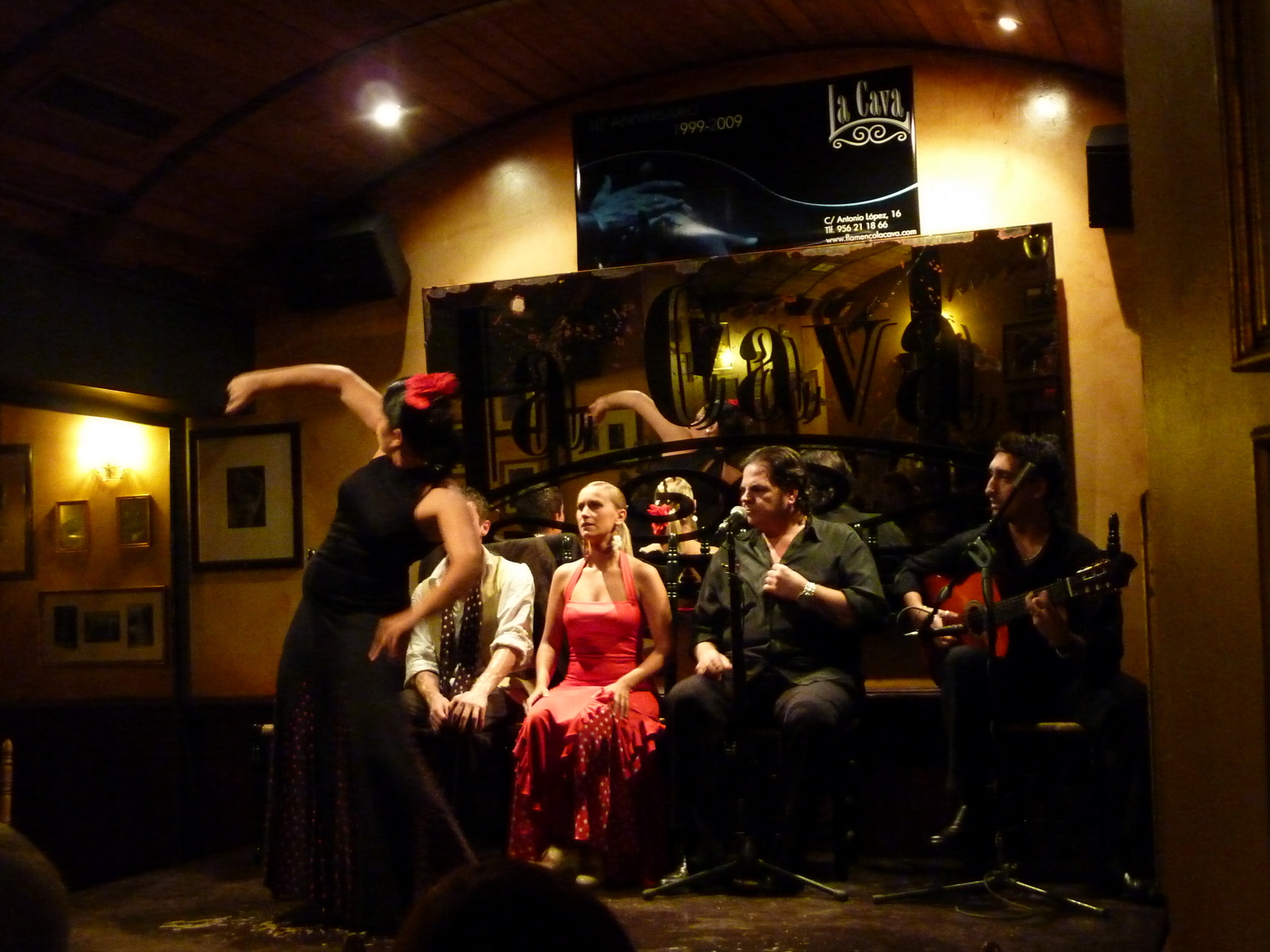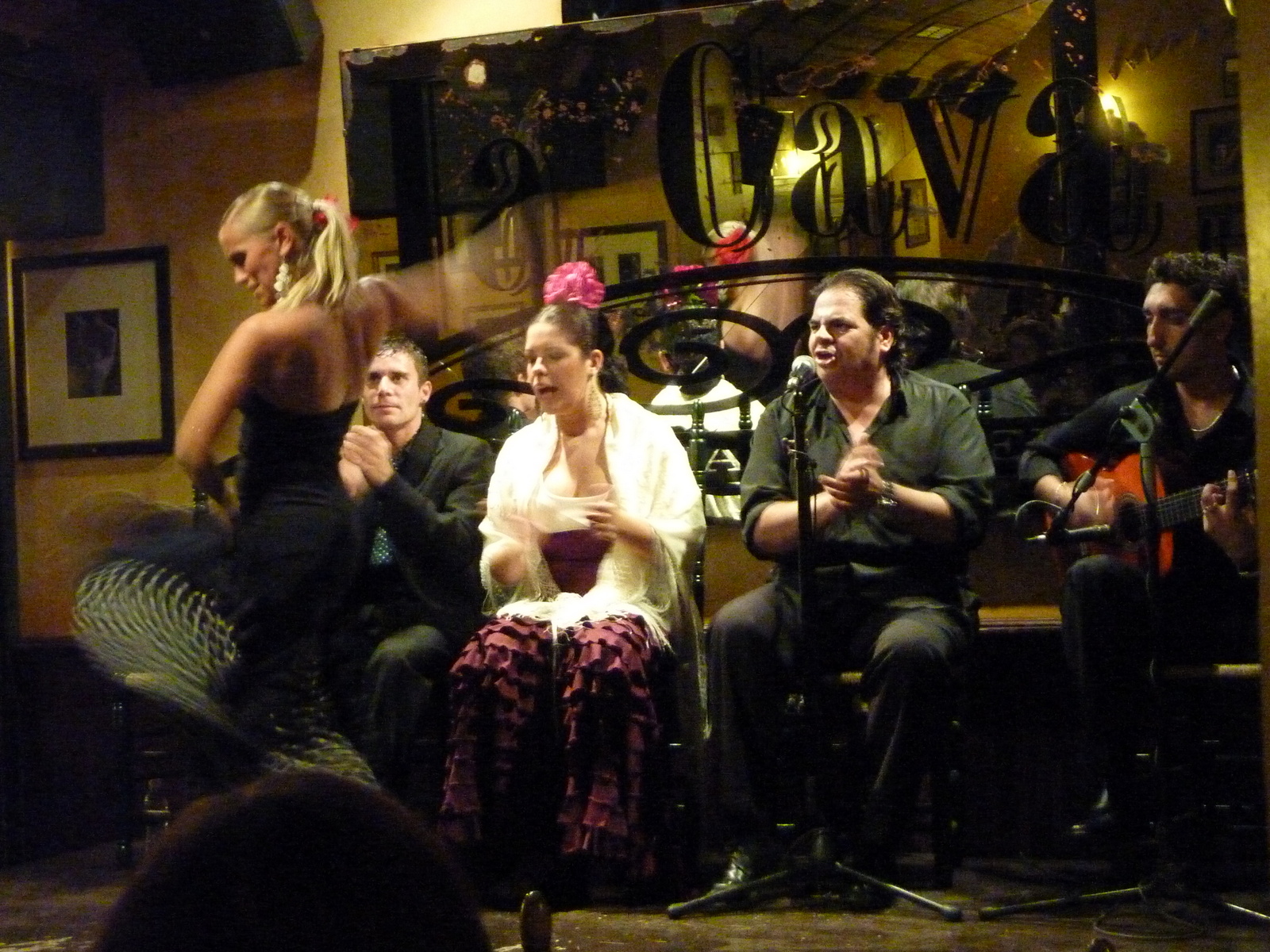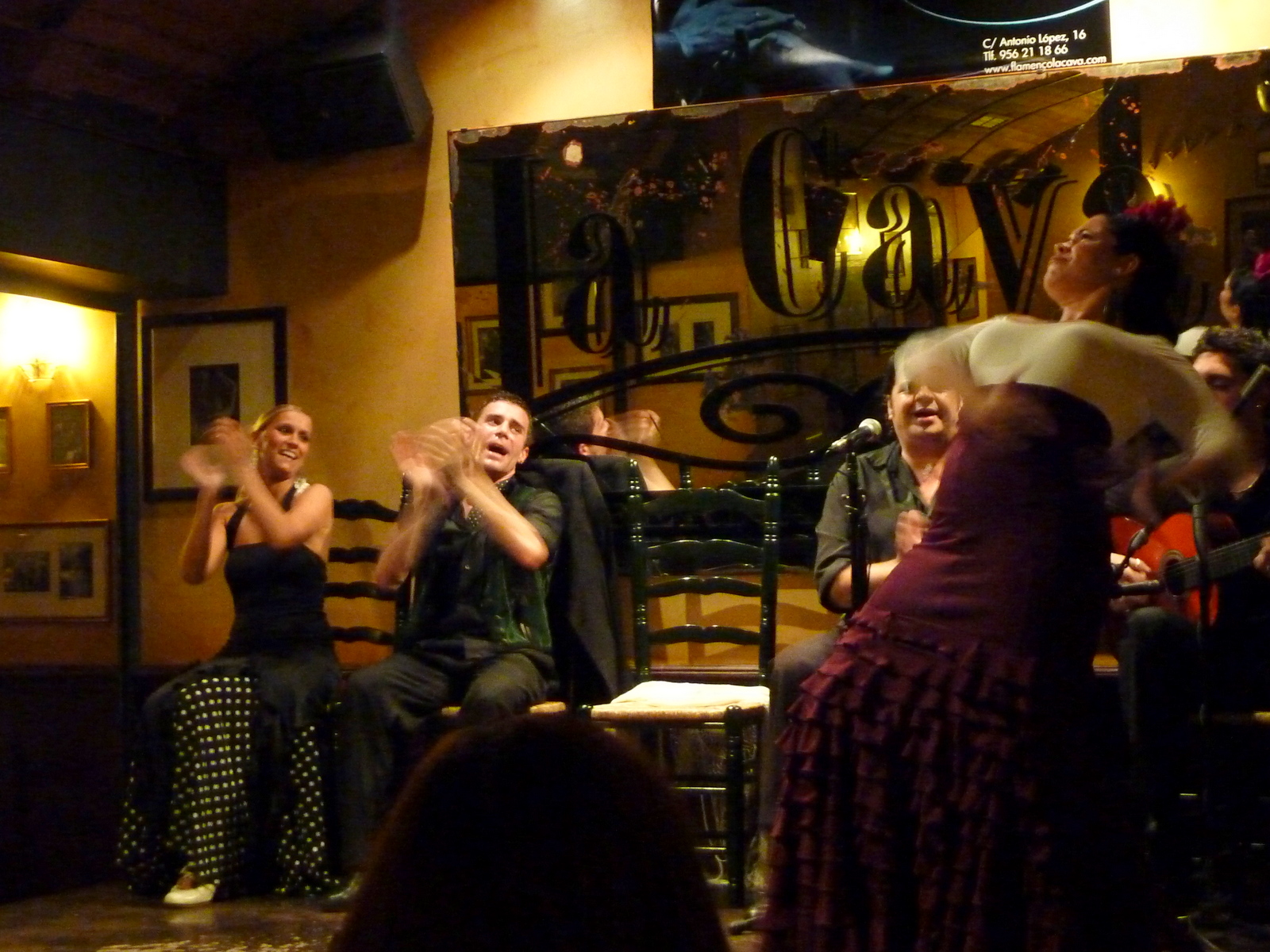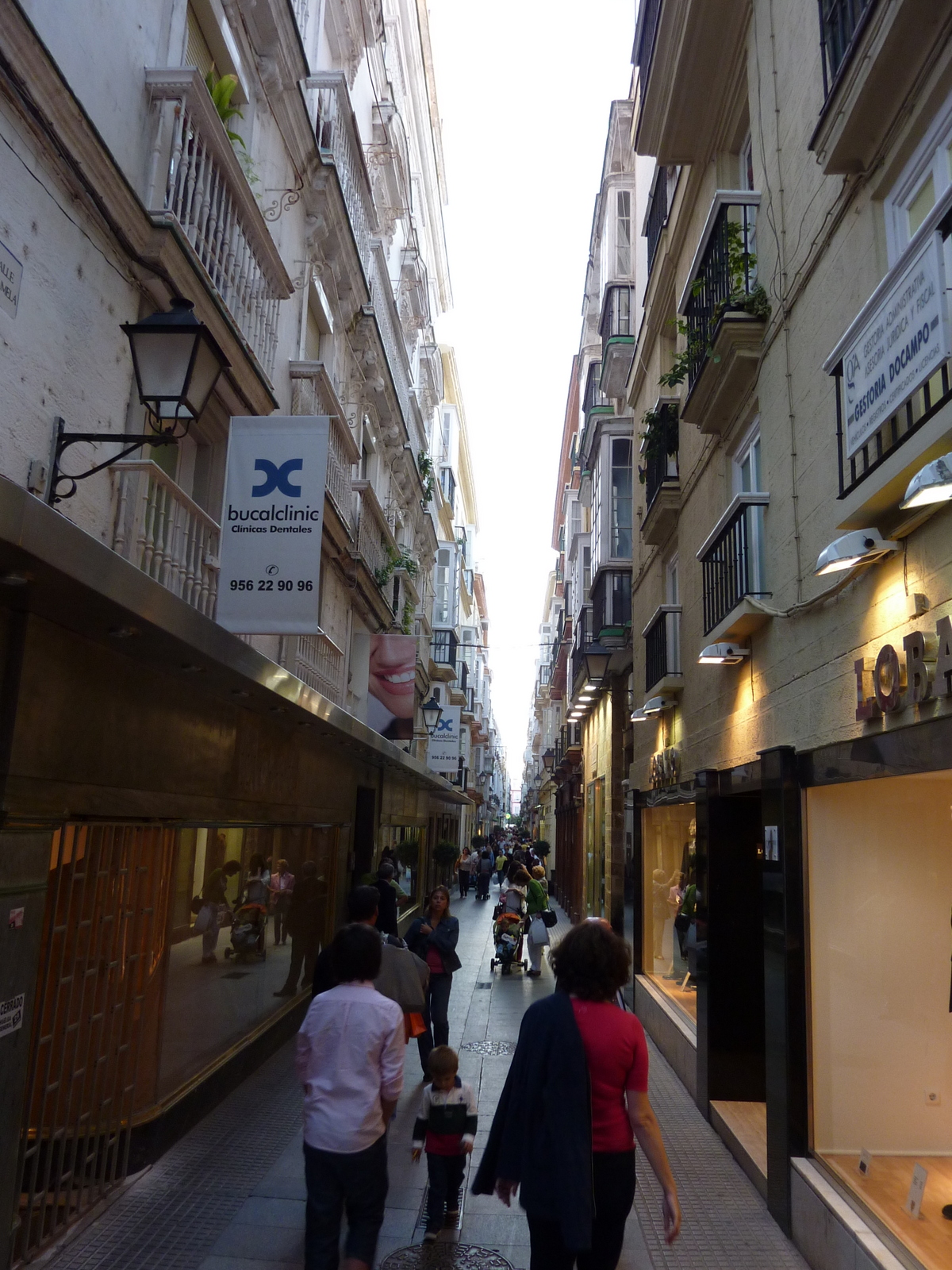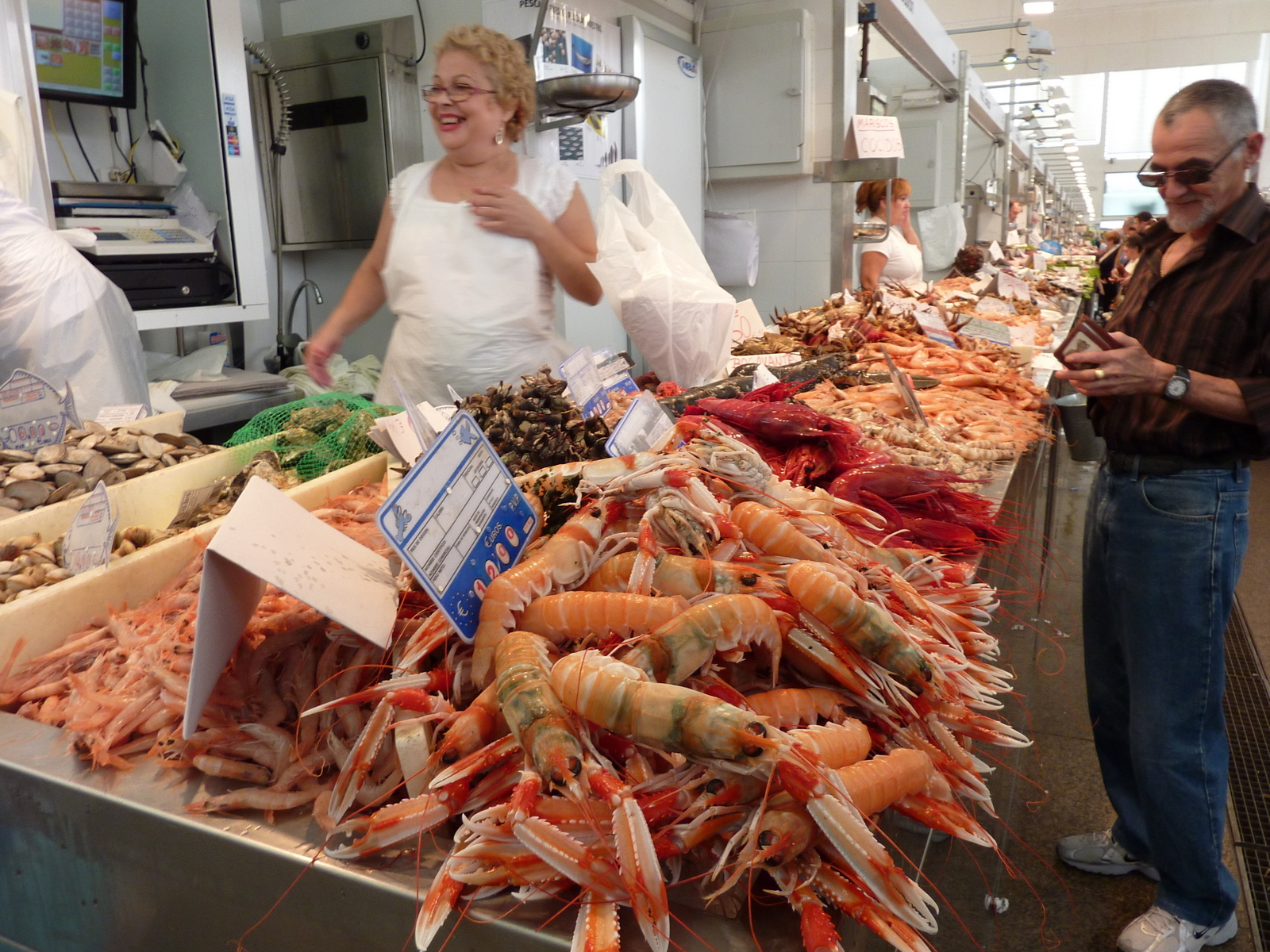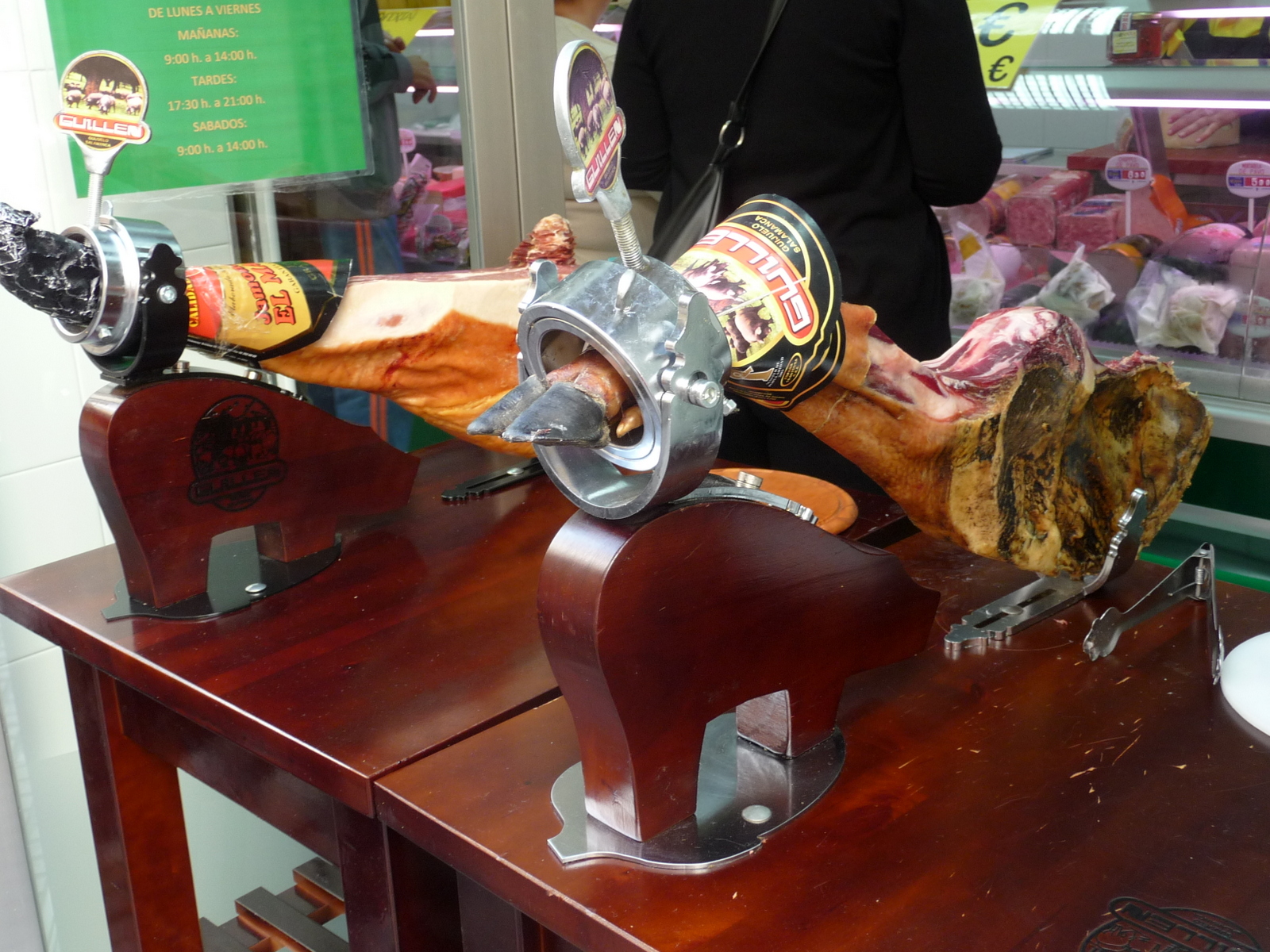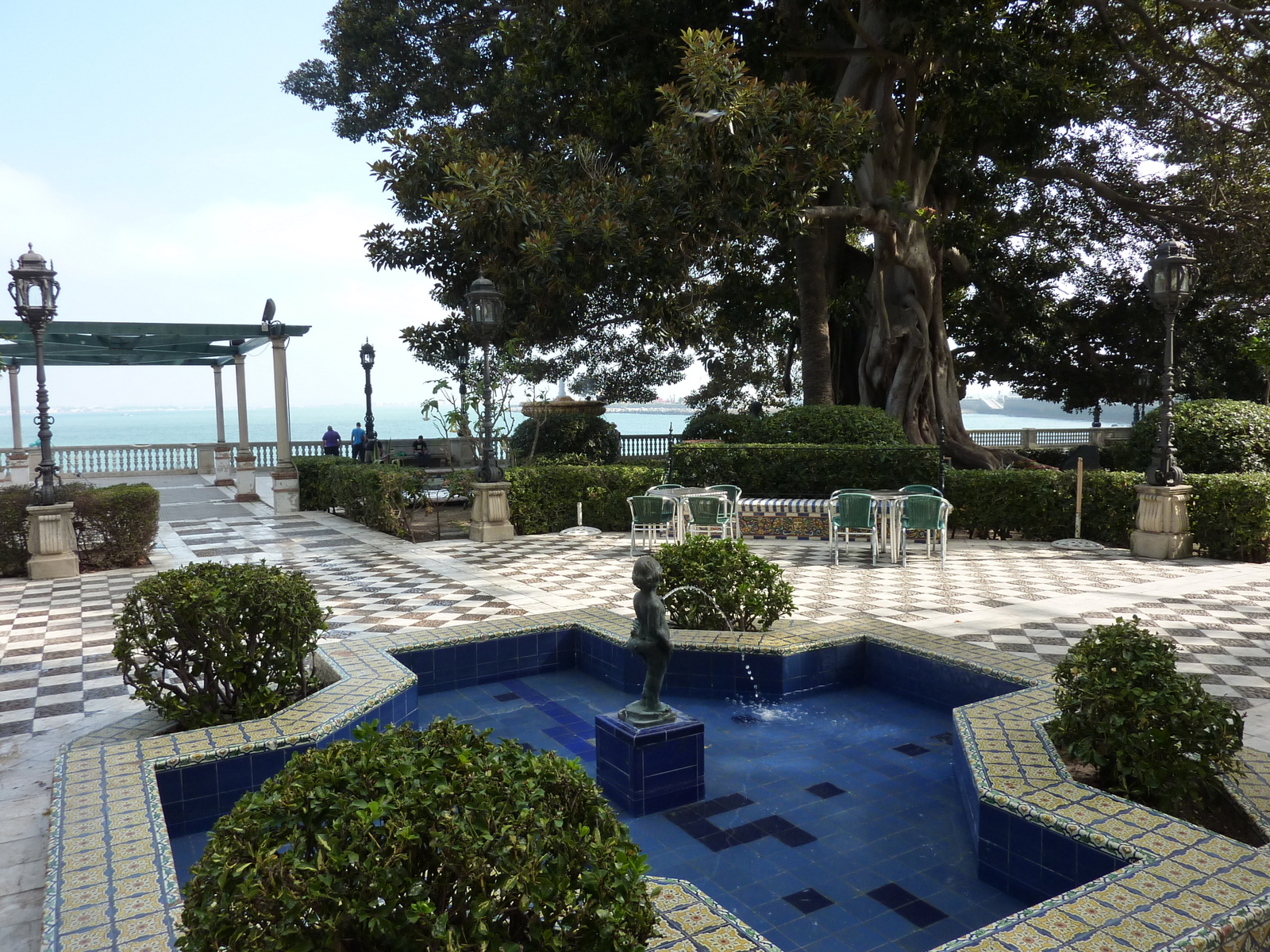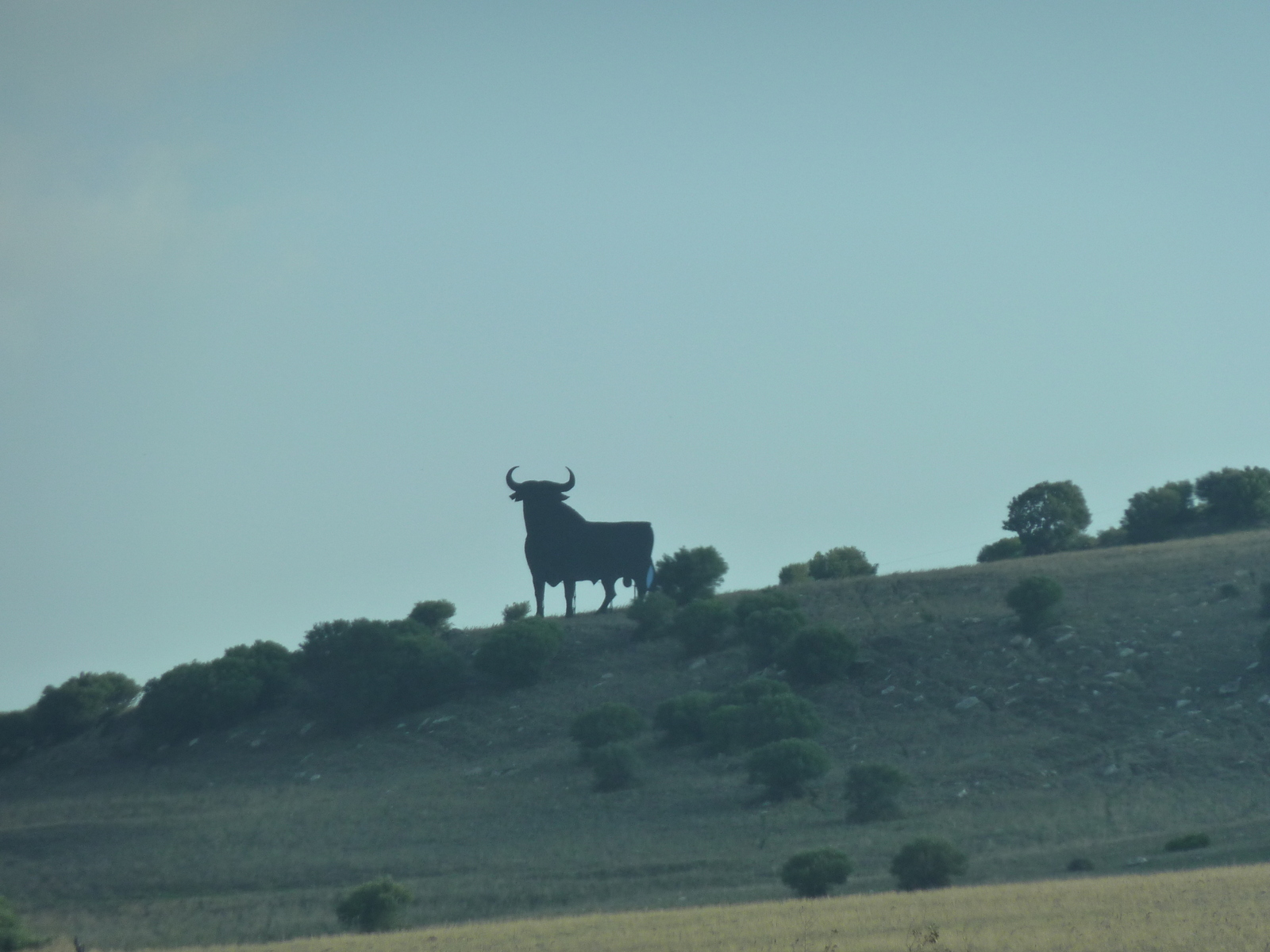In the village of Ronda
With Moonshadow snug in the Queensway Quay Marina in Gibraltar, the Windies and us set off in a hire car to see a bit of inland Spain.
After getting our LPG bottle filled by Dirk in Estepona (see the previous posting for more info), a few miles up the coast from Gibraltar, we then headed an hour’s drive inland to Ronda, one of the “pueblos blancos” or white villages in the mountains above the Mediterranean coast.
Ronda is unique in that the village sits on the top of a plateau surrounded by cliffs that plunge into the fertile farm lands below. Another interesting feature is the deep gorge that cuts through the middle of the town. An old stone arch bridge connects the two halves of the village. The bridge is called Puente Nuevo or “new bridge.” If that was “new” we wonder what they consider old.
This gorge cuts through the center of the village
The Puente Nuevo or new bridge connecting the two parts of the village
We had lunch near the main plaza and enjoyed an afternoon wandering around the narrow streets and perusing the artisan shops of this quaint and picturesque old village.
Horses are still used for transport in the old village of Ronda
The first spot was a small local spot that featured live Spanish guitar music, a massive bull’s head on the wall, good tapas and friendly people.
Annie and Merima enjoy tapas and Spanish guitar under the bull in Seville
Tapas stop number two, a few blocks away, was more like a cava with old wooden wine vats lining the walls. Good wine, tapas and atmosphere, but the staff were a bit brusque so we moved on fairly soon. The third and best spot was a bustling joint so we decided to order medium sized tapas, thinking the crowds must be indicative of the food quality. This was definitely the case and the plates were huge, ruining our appetite for any more tapas that evening.
The thirst not yet quenched, the crawl continued to a couple of other places in the neighborhood, taking us by the beautifully lit 16th century main cathedral. Seville’s cathedral is one of the largest in the world and its stunning bell tower is set on top of what was the minaret attached to the mosque which occupied the site during the era of Islamic rule.
The Cathedral of Seville at night
We set out early the next morning to take in a few of the sights of Seville. A short walk from the hotel was the Alcázar. We arrived at opening time and spent a few hours wandering around the royal palace’s sprawling complex of halls and gardens before the tour buses and crowds arrived. Built over 11 centuries, the architectural detail is varied as it is absolutely exquisite.
The Alcazar
The gardens in the Alcazar
Inner courtyard around living quarters at the Alcazar
Detail of the arches surrounding the courtyard
The women’s bath
A fountain in the garden
A short walk from the Alcázar is the Seville Cathedral where Christopher Columbus is supposedly entombed. We went into the main chapel and then walked up the ramp to the top of the bell tower where we enjoyed a commanding 360 degree of Seville. After almost a full day of sight seeing, we hopped in the car and drove a couple hours over to the Atlantic coast and the city of Cádiz.
The massive pipe organ in the Cathedral of Seville
Old Cádiz is situated at the tip of a long narrow peninsula. It is quite a compact city and one could easily walk from one side to the other in 20-30 minutes. It is old and elegant with beautiful plazas, parks and fashionable pedestrian-only shopping areas.
Our hotel was very central, but well hidden on a bollard-protected plaza. It was rated at three-star, but we would have rated it at about half that. Hotel parking was a convenient (not!) 10 minute walk from the hotel in a public garage.
We arrived in time to freshen up and headed to an excellent nearby tapas bar for happy hour. It was a very rustic sort of place, oozing with atmosphere that had patas de jamón (Iberian ham legs), a local favorite, hanging from the ceiling over the bar tables. A little upside-down umbrella inserted into the very bottom caught any fat dripping from the cured meat.
Annie and Liam enjoying tapas under the ham legs
Around 9 pm we took a short walk to a place called La Cava. La Cava is a well known local tapas bar that puts on an excellent Flamenco show a few times a week. The food was good, the sangria free flowing and excellent, and the dancing was superb. It is amazing the sound that came from a lone guitar, one singer and four sets of clapping hands and two clicking heels.
Jesus Barrios Collante singing at La Cava
The guitarist looks calm but look at his hand
Three dancers, two female and one male, performed a couple hours of mesmerizing flamenco to a packed and enthusiastic house.
This young man workd up a real sweat during his performance
And the ladies swirled and glowed
We spent the next morning and early afternoon exploring old Cádiz on foot, taking in the recently renovated central market, some of the shopping lanes and the waterfront Parque del Genovés before enjoying a tapas lunch on the plaza by our hotel.
A narrow shopping street in old Cadiz
The seafood section of the central market was particularly impressive
Patas de jamon (ham legs) are popular tapas treats
The Parque del Genovese in Cadiz
After lunch we headed back to Gibralter, arriving in time for dinner at our favorite pub in Irish Town.
The ubiquitous Spanish bull can be spotted on hills in the countryside
And windmills are still to be seen, albeit updated a bit from the days of Don Quixote

